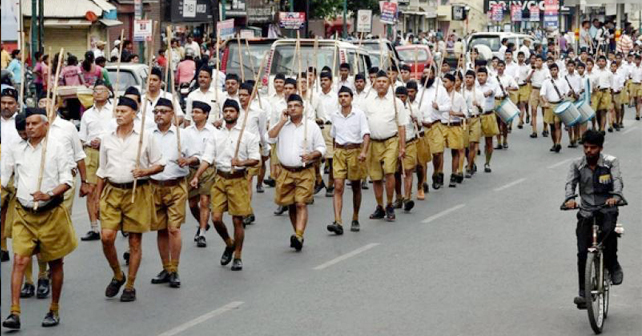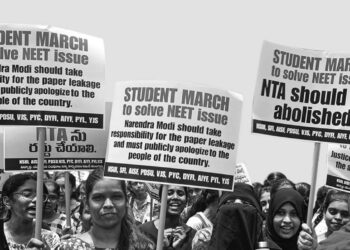Mohan Guruswamy, policy Analyst Studying economic and security issues Specialist in the Chines Economy
The RSS is trying to attach themselves to the legacy of patel, to get a leg into the nationalist movement
Soon after Narendra Modi became Prime Minister, construction began on building a colossal statue of Sardar Vallabhbhai Patel, India’s first deputy Prime Minister, on an inland island called Sadhu Bet facing the Narmada Dam. Planned at a cost of about Rs 3,000 crores and to stand 182 meters (597 feet) tall, this Chinese-made bronze statue would be the tallest in the world. There is no doubt that this statue when completed would become a major place of political worship like the Rajghat and Indira Gandhi memorial in New Delhi. But beyond tourist commerce there is another reason driving for this project. It is to give the RSS a genealogy it doesn’t have. Manufactured genealogy is recurring feature of our history. Pre-Islamic invaders from Central Asia like the Hepthalites (White Huns) and Ahir Gatae from the region extending from Bactria to present day Xinjiang conquered a good part of northern India and established kingdoms. The greatest of these invaders was Kanishka, whose realm stretched from Turfan in the Tarim Basin in Xinjiang to Pataliputra on the Gangetic Plain. Kanishka was of Turushka or Turkestani origin. These new rulers, some of whom were Buddhists, were quickly absorbed into Hindu society and were made Agnikula Rajputs (family of the Fire God), others got more extravagant genealogies deriving from the sun and moon, hence Suryavanshi and Chandravanshi Rajputs. In this manner the integrity of the Brahminical varna system was preserved.
The Brahmin-dominated RSS’ government in Maharashtra has embarked on building another gigantic statue, this one of Chhatrapati Shivaji. This is not without some irony as the varna of the Marathas is even now a contested issue, some arguing for their being of the Kshatriya varna, and others for their being of Kunbi peasant origins. This issue was the subject of antagonism between the Brahmins and Marathas, dating back to the time of Shivaji. When it was time for Shivaji’s coronation in 1674, the Brahmins of Poona baulked stating that the Bhonsle’s were not Kshatriyas. The legend has it that a Brahmin priest from Banaras, Gaga Bhatta, on receiving a generous payment performed the ceremony. The Chhatrapati’s genealogy now showed that the Bhonsles were a branch of the highly respected Sisodias of Mewar, the Kshatriyas of the purest Rajput clan. Whatever might have been his caste antecedents, Shivaji undoubtedly was one of India’s greatest kings. His achievements didn’t need a manufactured genealogy. The ultra-nationalist RSS is still in search of a genealogy that will connect it to the nationalist movement that won India its freedom. The truth is that the contemporary writings and speeches of RSS leaders have a very different story to tell.
These leaders showed little enthusiasm for the anti-British struggle.
Though the founder of the RSS, B.R. Hedgewar had an early association with the Congress and other nationalist movements like Bhagat Singh and Chandrashekhar Azad’s Hindustan Republican Association, he left it all behind and founded the RSS.
He also stopped his followers from the nationalist path. In fact, a later sarsanghchalak, B.R. Deoras, wrote approvingly of how “Dr Hedgewar saved him and others from the path of Bhagat Singh and his comrades.” With the death of Hedgewar in 1940, the RSS lost all interest in freedom. Its new leader M.S. Golwalkar drew inspiration from Adolf Hitler’s ideology of race purity. Paradoxically, Golwalkar also admired Jews for “maintaining their religion, culture and language”.
The BJP leadership is very keen to project the RSS as a component of the freedom struggle. The BJP finds it embarrassing that the RSS — to which the top leadership as well as the overwhelming majority of the cadre of the BJP belong — was not a part of the freedom movement.
Golwalkar’s focus was on religion, racial purity and exclusion. Freedom was to be left to lesser mortals like Gandhiji and his Congress. He wanted the RSS to be involved only in “routine work”.
In the words of Golwalkar: “There is another reason for the need of always remaining involved in routine work. There is some unrest in the mind due to the situation developing in the country from time to time. There was such unrest in 1942. Before that there was the movement in 1930-31. At that time many other people had gone to Doctorji (Hedgewar). This ‘delegation’ requested Doctorji that this movement (Congress) will give independence and Sangh should not lag behind. At that time, when a gentleman told Doctorji that he was ready to go to jail, Doctorji said: ‘Definitely go. But who will take care of your family then?’ That gentlemen told, ‘he has sufficiently arranged resources not only to run the family expenses for two years but also to pay fines according to the requirements’. Then Doctorji said to him: ‘if you have fully arranged for the resources then come out to work for the Sangh for two years’.” Golwalkar’s point was crystal clear. Dharam came before dharma.
The BJP leadership is very keen to project the RSS as a component of the freedom struggle. The BJP finds it embarrassing that the RSS — to which the top leadership as well as the overwhelming majority of the cadre of the BJP belong — was not a part of the freedom movement. The RSS lacks the courage to categorically state that it did not participate in the freedom struggle because its ideology prevented it from doing so. There is the well-known concocted story of how the RSS tried to lionise Atal Behari Vajpayee’s role in the 1942 movement. This ended up in a huge fiasco when it was discovered that Vajpayee actually made a confessional statement disassociating himself from the protest event at his hometown Bateshwar. In this confessional he wrote: “Ten or 12 persons were in the forest office. I was at a distance of 100 yards. I did not render any assistance in demolishing the government building. Thereafter, we went to our respective homes.” Clearly this was leading nowhere.
Hence, the RSS is trying to attach themselves the legacy of Vallabhbhai Patel, to get a leg into the nationalist movement. They forget that it was Sardar Patel, who had banned the RSS after learning that its workers were distributing sweets to celebrate Gandhiji’s assassination. In the run up to the 2014 elections Narendra Modi displayed his lack of knowledge of history or willingness to distort it by saying that the Congress Party wanted Patel to be the first Prime Minister. The fact is that Jawaharlal Nehru became the president of the Congress in 1946, after Maulana Azad was dissuaded from offering himself on the basis of the system of rotation that the Congress informally followed. Patel was never in the run. Given Nehru’s overwhelming popularity, even if Patel contested Nehru would have defeated him.
Both L.K. Advani and Narendra Modi have tried to create a fissure between Nehru and Patel. They seem to be confused between dissent and dissidence. Dissent is a genuine difference of opinion, and there were many between Nehru and Patel, as should be between two independent-minded individuals. Dissidence is a result of competing ambitions. On this Patel was clear. He wrote: “It was, therefore, in the fitness of things that in the twilight preceding the dawn of Independence, he (Nehru) should have been our leading light, and that when India was faced with crises after crises, following the achievement of our freedom, he should have been the upholder of our faith and the leader of our legions.” Patel tellingly added: “Contrary to the impression created by some interested persons and eagerly accepted in credulous circles, we have worked together as lifelong friends and colleagues, adjusting ourselves each other’s advice as only those who have confidence in each other can.” Now the RSS is trying to make Sardar Patel its own. In this modern version of the RSS’ history, it tries to give itself an indirect lineage deriving from Sardar Patel. The colossal statue is supposed to rewrite its history. But it will only end up as a parvenu wanting in patriotism when it mattered most. But Narendra Modi won’t know all this. History is not his forte, or else he would not think that Alexander died on the west bank of the Ganges.
Courtesy: Deccan Chronicle








